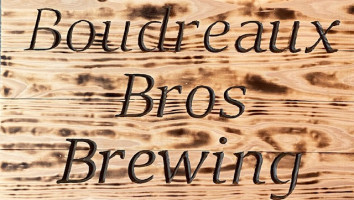Hops
|
Amount
|
Variety
|
Cost
|
Type
|
AA
|
Use
|
Time
|
IBU
|
Bill %
|
|
0.25 oz |
East Kent Goldings0.25 oz East Kent Goldings Hops |
|
Pellet |
5.8 |
First Wort at 212 °F
|
60 min |
6.78 |
16.7% |
|
0.75 oz |
East Kent Goldings0.75 oz East Kent Goldings Hops |
|
Pellet |
5.8 |
Boil at 212 °F
|
30 min |
14.21 |
50% |
|
0.50 oz |
East Kent Goldings0.5 oz East Kent Goldings Hops |
|
Pellet |
5.8 |
Whirlpool at 175 °F
|
10 min |
1.28 |
33.3% |
|
1.50 oz
/ $ 0.00
|
Hops Summary
|
Amount
|
Variety
|
Cost
|
IBU
|
Bill %
|
|
1.50 oz |
East Kent Goldings (Pellet) 1.4999999965689 oz East Kent Goldings (Pellet) Hops |
|
22.27 |
100% |
|
1.50 oz
/ $ 0.00
|
Mash Guidelines
|
Amount
|
Description
|
Type
|
Start Temp
|
Target Temp
|
Time
|
|
8.4 gal |
Mash In |
Infusion |
150 °F |
150 °F |
10 min |
|
|
Saccharification Rest |
Temperature |
150 °F |
150 °F |
50 min |
|
|
Vorlauf |
Vorlauf |
150 °F |
168 °F |
15 min |
|
|
Mash Rest (No Recirculatiion) |
Temperature |
168 °F |
168 °F |
10 min |
Starting Mash Thickness:
3.2 qt/lb
Starting Grain Temp:
72 °F |
Priming
|
Method: co2
Amount: 7.22 psi
Temp: 35 °F
CO2 Level: 2.25 Volumes |
Target Water Profile
* Carencro, LA Balanced Profile II Custom
| Ca+2 |
Mg+2 |
Na+ |
Cl- |
SO4-2 |
HCO3- |
|
150 |
10 |
25 |
150 |
160 |
112 |
Salts were added to bring Carencro Municipal Water to the custom "Carencro Balanced Profile II." Na+ level adjusted to lesser amount for this brew session.
One gram table salt included to raise Na+ level to around 25 ppm, chloride level to close to 150 ppm.
|
|
Mash Chemistry and Brewing Water Calculator
|
Notes
6 days before...
Made 1 L starter for yeast, will need a second step to have sufficient cells. Add second step, 1L more wort, after 48 hours (Two days before brew day will work.).
Day Before...
Prepare water; filter/dechlorinate, add 1/2 Campden tablet. total 8.4 gallons of filtered Carencro water in kettle. Add all minerals and acid now. Check pH.
Initial pH of brewing water: __
Note: Measuring pH here is just for the record. The important thing is the benchmark pH taken 10 to 20 minutes after the mash is underway.
______________________
Brew Day...
MASH-IN
Equipment pump is turned off; all water is in kettle and not yet in hoses.
Heat mash water to 150 deg F. Remember, the pump is NOT on at this time!
Initial water temp: 150 deg F
Mash temp stabilizes at: 150 deg F
TURN OFF HEAT! Make sure the heat is turned off!
Quickly add all crushed grains to 150 deg F water, and stir rapidly. When temp is stabilized at 150 deg F, put lid on kettle. THEN, Open system, START PUMP, to allow water to flow AT A SLOW RATE through hoses for an additional 5 minutes. Liquid will recirculate through the mash AND by whirlpool, due to configuration of the 3-way valve.
______________________
Saccharification Rest (60 min)
Saccharification rest begins now. Water is now flowing and recirculation needs to be set at about 0.5 gal/min flow rate. Monitor flow rate so it stays about this level.
Mash pH is taken after 10 minutes after this rest begins.
Mash pH after mash-in (10 min): __
If needed, adjust pH to 5.4.
Acid added? YES or NO. If yes, how much ____
________________
For the record...
Near the end of the 60 min (about 50 min), take pH reading.
pH reading near end of mash: ____
Adjusted pH (if necessary): ____
______________________
Vorlauf/Mash-Out
With recirculation and heat still going, raise temp of recirculating mash to 168 deg F.
ADD DARK GRAINS NOW.
Hold temperature here for the 15 minute duration.
For the last 5 minutes of the Vorlauf, slow down the flow rate to a minimal amount, to allow grains to completely settle.
______________________
RAISING THE GRAIN BASKET
Lift grain basket from kettle and securely hang to pot, using the attachments provided. Allow to completely drain, may be 5 minutes or more.
_______________________
BOIL
FIRST, MEASURE PRE-BOIL pH AND PRE-BOIL GRAVITY.
PRE-BOIL pH: __
PRE-BOIL GRAVITY: __
With Brew Commander set for the boil program, it's time to begin.
Add FWH (first wort hops) hop addition at this time.
With power at 100%, begin raising temperature to boiling, monitoring carefully. When boiling commences, lower power to 85%, and lower than that if necessary.
When it appears that there is no danger of boil over, allow boiling to continue for the 60 minute duration. Continue to monitor throughout the boil.
20 minutes to End of Boil
Add Five Star® Super Moss. Make sure to use 1/3 tsp Super Moss.
10 minutes to End of Boil
Second hop addition. ADD SERVOMYCES.
End of Boil
SHUT OFF HEATER.
______________________
WHIRLPOOL
The whirlpool step is like a moving "hop stand."
Terminator Wort Chiller is in place with hoses and 3-way valve, which is set to send wort through chiller and then through whirlpool setup. Do the following steps...
Cool down to as cold as you can get it. Use ice chiller if needed. Now, it's time to transfer wort to fermentor.
________________________
Oxygenation/Transfer to Fermenter
With all oxygenation set up and transfer hoses in place, via 3-way valve transfer wort to fermenter as it is being oxygenated. When done, close fermenter, then prepare to pitch the yeast.
______________________
PITCHING THE YEAST
Add the decanted yeast culture to the fermentor. Carefully maintain sanitation.
TILT HYDROMETER
Drop the SANITIZED Tilt Hydrometer into the fermenter. This is how you will monitor fermentation temperature and gravity as beer ferments.
Maintain fermentation temperature of 63 deg F until gravity drops to 1.015, then raise it up to 70 deg F for 2 days. GOAL IS FOR GRAVITY TO DROP TO 1.015.
______________
CRASH COOL THE FERMENT
Slowly, over several days days, lower temperature of ferment to about 38 deg F.
Hold at 38 deg F or lower, but not lower than 35 deg F.
______________
TRANSFER TO KEG
Using oxygen-free techniques, transfer beer from fermenter to keg. After, add gelatin finings.
MOVE TO NEW KEG
About 3 days after adding gelatin finings to beer, transfer to another sanitized keg.
________________
CARBONATE BEER
Using the Blichmann Quick Carb, carbonate to 2.25 vol (medium level carbonation).

Last Updated and Sharing

- Public: Yup, Shared
- Last Updated: 2024-11-07 15:03 UTC
For quick copying and pasting to a text based forum or email.
Click the Download as HTML file button below.
Recipe costs can be adjusted by changing the batch size. They won't be saved but will give you an idea of costs if your final yield was different.
|
Cost $ |
Cost % |
| Fermentables |
$ |
|
Steeping Grains
(Extract Only) |
$ |
|
| Hops |
$ |
|
| Yeast |
$ |
|
| Other |
$ |
|
| Cost Per Barrel |
$ 0.00 |
|
| Cost Per Pint |
$ 0.00 |
|
| Total Cost |
$ 0.00 |
|
Discussion about this recipe:
